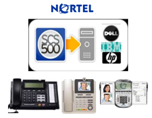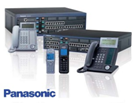(Editor’s note: More than two-thirds of new telephony system introductions in 2008 targeted small or mid-sized businesses or branch offices of larger organizations that have fewer than 750 employees. A significant number of these SMB systems – nearly 70 percent - address very small businesses, those with under 100 employees. Top applications for SMBs in 2008 focused on business continuity with capabilities that facilitate collaboration and the ability to reach others quickly and efficiently.)
Telecommunications manufacturers continue to focus on the small and mid-size business telephony market. Database and analyst group, TelecomTactics, a division of T3i Group LLC, finds that more than two-thirds of new telephony system introductions in 2008 targeted small or mid-sized businesses or branch offices of larger organizations that have fewer than 750 employees with a significant number of these SMB systems – nearly 70 percent - actually addressing very small businesses, those with under 100 employees.
A recent T3i Group report, titled “InfoTrack for Unified Communications: 2008 SMB Market Analysis” reported that SMBs represented 36 percent of US IPT shipments in 2007, and that their growth rate is faster than enterprise shipments, so it is no surprise that manufacturers are aggressively pursuing this key segment with new platforms and business applications.
Leading manufacturers unveiled more than 20 new platforms in 2008, including new systems from Aastra, AltiGen, Avaya, Cisco, Epygi, ESI, Grandstream, Mitel, NEC, Nortel, Panasonic, Toshiba and Vertical Communications.
Some of the new entries round-out existing product families, while others mark the entrance into a new market segment. For example, Toshiba’s Strata CIX1200, Nortel’s Business Communications Manager 450 (BCM450) and Epygi’s QuadroM 32x introduce a higher capacity version within their respective product families, and also provide an affordable migration for the installed customer base.
Grandstream, a designer and manufacturer of SIP phones, IP Video phones and analog adapters and gateways since 2002, entered the VoIP system market in 2008 with the company’s first IP PBX (the GXE502x) for smaller businesses. AltiGen, a business phone system provider that previously focused on SMBs and distributed businesses, opened a new market with the MAX Communications Server, a software-based VoIP phone system for larger businesses.
Below is a sampling of several new platforms for SMBs.

Aastra Telecom (News - Alert), the North American business unit of Aastra Technologies Limited, addressed smaller businesses in North America with a new option, the AastraLink RP phone system, a version of the Microsoft Response Point phone system that combines software from Microsoft with hardware from Aastra Technologies. Aastra Telecom also debuted AastraLink Pro 160, a Linux-based appliance that runs the Asterisk (News - Alert) open source PBX software from Digium. Both new offers support 50 users.

Nortel rolled out the SIP-based Software Communication System (Nortel SCS500) for SMBs with 30 to over 500 employees (scales to 1,000 users). SCS500 software (based on Pingtel’s open source sipXecs) runs on industry standard hardware server platforms from Dell, IBM (News - Alert) and HP to deliver key unified communications features for collaborative work environments (VoIP, voice and video conferencing, presence and instant messaging, voice and unified messaging, find me/follow me features and more).

Panasonic is evolving and advancing its communications solutions for SMBs and high-end residences with a new portfolio of hardware and software called Enhanced Communications Solutions. ECS is a total solution package that encompasses the recently-introduced Panasonic KX-NCP rack-mount business telephony systems, KX-NCP500 (to 68 stations) and KX-NCP1000 (to 108 stations), digital, IP and SIP telephones, DECT 6.0 wireless telephones, desktop and business applications, video cameras and third party applications.
Key Applications for SMBs: While manufacturers continue to roll out platforms sized specifically for SMBs, they are also addressing concerns by smaller businesses about the high cost and complexity of adding more advanced applications. Nearly all of new telephony platforms include some built-in applications as standard functionality or which are easily activated by license keys – no additional components necessary. The quantity and types of embedded applications varies and may include voice mail, auto attendant, unified messaging, conferencing, contact center, call recording, mobility, unified communications or other business functionality. If not embedded, many of the latest SMB applications are easily integrated and packaged and priced specifically for SMBs.
Top applications for SMBs in 2008 focused on business continuity with capabilities that facilitate collaboration and the ability to reach others quickly and efficiently.
Manufacturers point to the time-saving improvements and cost savings possible with the new unified communications software (reduced phone tag and less travel, for example). Desktop tools that enable advanced conferencing, video, presence, instant messaging and speech recognition improve employee productivity, help workers stay connected and provide a higher level of customer service.
Presence and screen-based call management applications were prevalent in 2008 as these help office workers and contact center agents to be more productive, while also providing customers with a more positive experience. Panasonic’s Communications Assistant software (a 5-user Basic license is included free with the new KX-NCP systems) enables point and click telephony, screen-based presence and integration with Microsoft Outlook and TAPI-enabled CRM desktop tools. Toshiba’s Net Phone call management application for Strata CIX systems added a Presence Viewer in 2008 that displays a user’s status in real-time, and users can click to initiate a chat or make a call or use whiteboard collaboration.
The Vertical Communications’ ViewPoint desktop call control application incorporates a new Call Rules setting that defines call handling for incoming calls based on Caller ID, time of day or week or other criteria, while a Routing List lets users specify where to send a call such as to a desk extension, home or mobile phone.
A number of manufacturers addressed the growing demand for workplace mobility among smaller businesses, including telephony system provider ESI (News - Alert) that introduced two new ESI Bluetooth Voice Integration products in 2008 for its ESI Communications Server system; an ESI phone can receive calls from a Bluetooth-enabled cell phone, or users can pair a Bluetooth Headset with an ESI phone. Avaya enhanced the Mobility Features license for IP Office, adding the one-X Mobile Client for Small Business, a new graphical user interface for Windows Mobile 5, Windows Mobile 6 and Symbian Single-Mode intelligent devices. And, many SMB systems, such as the new NEC (News - Alert) UX5000 Communication Server, support a Mobile Extension feature that allows the use of a cell phone as an extension of the system for simultaneous ringing of the desk phone and the mobile device.
Larger Enterprises: Though SMB systems dominated in 2008, larger businesses were not completely overlooked. Manufacturers introduced several new enterprise-level systems, including software-based VoIP phone systems from Aastra and AltiGen. The Aastra 5000 IP telephony software, based on open standards and the Linux operating system, scales from 500 to 150,000 users (15,000 per server) and can accommodate 2,000 sites. AltiGen’s MAX Communications Server (handles up to 5,000 users or 1,000 users per single server) is a software-based VoIP phone system that runs on standard Intel-based servers and integrates with Microsoft Exchange Server 2007 unified messaging and Microsoft Office Communicator. Some manufacturers announced next generation systems that replace earlier systems with improved functionality.
In the fall of 2008, NEC began shipping the UNIVERGE SV8500 Communications Server, an open standards-based enterprise platform that is a forward-looking alternative and upgrade path for the company’s earlier NEAX 2400 IPX (two other SV8000 family members, the SV8100 and SV8300, are migrations for NEC’s earlier Electra Elite IPK II and NEAX 2000 IPS).
Also for larger enterprises, Avaya introduced the S8730 Media Server for high availability environments, an upgraded version of its S8720 Server that adds RAID and dual power supplies, default software duplication (shadowing) with hardware duplication as an option and which supports an XL configuration for large, distributed enterprises or call centers. The Mitel Communication Suite (scales from 100 to 5,000 devices) combines the company’s flagship 3300 ICP call control software and Mitel applications on an industry-standard Sun Microsystem’s server, eliminating the need for proprietary boxes, but also making installation and management easy for IT managers already familiar with the Sun server environment.
Many manufacturers, including Alcatel-Lucent, Avaya, Cisco, Mitel and Siemens unveiled new Unified Communications products and license schemes for their enterprise systems. Mitel’s new desktop and mobile UC clients, available now for the company’s enterprise-level 3300 IP Communications Platform, will be extended to the Mitel 5000 SMB platforms (originally from Inter-Tel) in 2009.
Visit TelecomTactics to learn more about these new business telephony systems and other IP PBX systems on the market, as well as the associated IP and wireless telephones and VoIP applications, including messaging, contact center and the latest desktop tools. TelecomTactics is a division of the T3i Group LLC which provides market research, data, analysis, and consulting and advisory services to the telecommunications industry, conducting business through four operating units: Tarifica, TelecomTactics, TelecomWeb and InfoTrack.
Don’t forget to check out TMCnet’s White Paper Library, which provides a selection of in-depth information on relevant topics affecting the IP Communications industry. The library offers white papers, case studies and other documents which are free to registered users.
Sandra M. Gustavsen, senior analyst for T3i Group, contributes her TelecomTactics column to TMCnet. To read more of Sandra’s articles, please visit her columnist page.
Edited by Michael Dinan
 Internet Telephony Magazine
Click here to read latest issue
Internet Telephony Magazine
Click here to read latest issue CUSTOMER
CUSTOMER  Cloud Computing Magazine
Click here to read latest issue
Cloud Computing Magazine
Click here to read latest issue IoT EVOLUTION MAGAZINE
IoT EVOLUTION MAGAZINE




